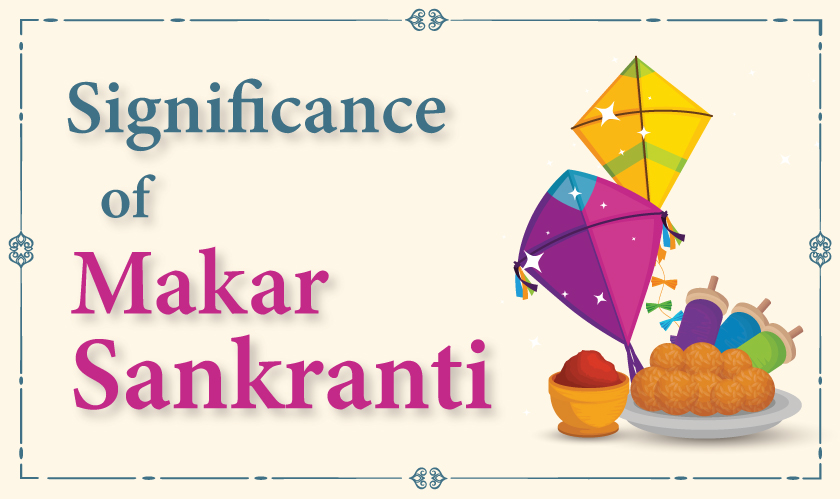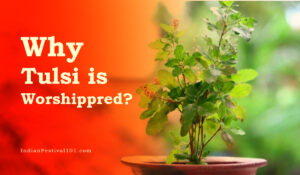Makar Sankranti, also known as Uttarayan, is a vibrant and auspicious harvest festival celebrated across India. This festival is celebrated by different names in different region following local cultural belief. This joyous occasion is not just a harvest festival but a celebration of diverse culture, traditions, and festivities of India. Why Makar Sankranti is celebrated? In this article we are going to explore its various aspects in little more detail.
What is Makar Sankranti?
The festival Makar Sankranti is a solar event. As per the ancient traditions, Makar Sankranti is the day when Sun starts its Northward journey which is known as Uttarayan. The last day of every month is known as Sankranti which signifies the movement or passing away of one month & the start of another.
Makar Sankranti 2024 date and time
Falling on the 14th of January every year, it marks the transition of the sun into the zodiac sign of Capricorn, signaling the end of winter and the onset of longer days.
Makar Sankranti is one of the few Hindu festivals which fall on the same date in local calendars every year: 14 January, with some exceptions when the festival is celebrated on 15 January. This year Makar Sankranti 2024 is going to be celebrated on 15 January.
Different Names of Makar Sankranti
Maker Sankranti is the festival celebrated by different names in different states. In North India, it is celebrated as Lohri. Uttarayan, Maghi, and Khichdi are some other names for the same festival. In South India, the festival is known as Pongal.
While in the South special meals are prepared to celebrate.
Story of Makar Sankranti
Makar Sankranti has deep historical and cultural roots that date back thousands of years. It is believed to be a celebration of the Sun God, Surya, and is mentioned in ancient Hindu holy books.
Significance of Makar Sankranti

The festival is one of bonding where every member of society is asked to bury the hatchet with enemies and foes and live in peace. The festival is a symbol of the end of darkness and the triumph of light, signifying the victory of good over evil.
Uttarayan
Suvechha for Makar Sankranti, as the Sun starts its northbound journey known as Uttarayan. On the last day of Poush (Hindu Calender), at dawn or Brahma muhurta, the night of the gods has ended and the doors have opened again with the start of Uttarayan.
As per our texts, it is believed that one human year is equivalent to one day and one night of the gods. The Uttarayan part of the year (6 months) is one day, and the dakshiyan journey of the sun for 6 months is one night for the gods. Like humans lock their doors before retiring for the night, the gods do the same with their doors at the start of dakshiyan, and the doors remain locked for the next 6 months.
Ganga bath has special significance on this day, Bhishma Pitamah was also the son of Ganga. It is also the day that Pitamah Bhishma chose to die after lying on his bed of arrows for 56 days. After spending 58 days on the bed of arrows, Bhishma Pitamah had given up his life on Makar Sankranti, the wish was a boon of death. Bhishma Pitamah fought continuously for 10 days in the war of Mahabharata which lasted for 18 days.
In South India, in Kerala, one of the most austere and difficult pilgrimages of Shabrimala ends on this auspicious day.
The Importance of Til (Sesame) and Gud (Jaggery):
Makar Sankranti is the festival of Til-Gul where sesame and Jaggery Laddoos are distributed among all. The common feature everywhere is sweets made of jaggery. Sesame seeds and jaggery hold special significance during Makar Sankranti. The combination of these ingredients is believed to provide warmth to the body during the winter season. People prepare and consume various delicacies made from sesame and jaggery, such as til ladoos and gud ke laddu, as a part of the celebrations.
Makar Sankranti Belief and Rituals
Makar Sankranti is not just about festivities; it also involves various rituals and traditions.
Bathing is believed to wash away sins on this day. Taking a holy dip in rivers like the Ganges is considered auspicious on this day. People take a holy dip in rivers, especially Ganga, Yamuna, Godavari, Krishna, and Cauvery.
Besides the usual harvest celebration, this day has other significance too and is a worship of the Sun-god that sustains life on earth. In some regions, people worship the Sun God and offer prayers for a bountiful harvest and prosperity.
Makar Sankranti is believed to be a time of peace and prosperity. The day is regarded as important for spiritual practices.
It is also believed that if you die during Makar Sankranti, you are not reborn but go directly to heaven.
Makar Sankranti Celebration
Makar Sankranti is celebrated in many parts of South Asia with some regional variations. It is known by different names and celebrated with different customs in different parts of the region.
Though extremely popular as Makar Sankranti, the festival is predominantly a harvest festival and is celebrated throughout India, from north to south and east to west.
People used to take baths early in the morning and pray to god Sun. Other parts of the country too, celebrate by taking a dip in the holy rivers flowing through states to cleanse themselves of sins. On this occasion, a special celebration is seen on riverbanks in different parts of India, especially in Prayagraj, Ujjain, Haridwar, and Nasik. Kumbh Fair starts with this festival and continues for 30-35 days. Checkout:- List of Mela in India
Regional Celebrations of Makar Sankranti
One of the unique aspects of Makar Sankranti is the diversity in its celebrations across different regions of India. In the northern parts, particularly in states like Uttar Pradesh and Haryana, it is marked by kite-flying competitions. The skies come alive with colorful kites as friends and family engage in friendly battles to cut each other’s strings.
Kite Flying Festival in Gujarat and Maharashtra
Makar Sankranti is the most popular in West India. In Gujarat and Maharashtra, the festival is celebrated by flying kites. In Maharashtra, the festival is synonymous with the exchange of tilgul (sesame and jaggery sweets) and the greeting “Tilgul ghya, god god bola” which translates to “Accept these sweets and speak sweet words.” This exchange symbolizes the sweetening of relationships and the sharing of joy.
Pongal in Tamil Nadu
Pongal, the Tamil version of Makar Sankranti, is a four-day harvest festival celebrated with traditional fervor. The highlight is the preparation of a dish called Pongal, a sweet rice dish cooked with fresh milk and jaggery. Know more: Pongal- South Indian Harvest Festival
Down south in Karnataka, Makar Sankranti is celebrated as Sankranthi and involves the preparation of a special dish called ‘Ellu Bella’ made with sesame seeds, jaggery, and coconut. This mixture is exchanged among family and friends, signifying the blending of different aspects of life.
Conclusion:
diverse celebrations Makar Sankranti festival reflects the unity in diversity that is characteristic of India. It is a festival that not only marks the changing seasons but also strengthens the bonds of family and community. As the kites soar high in the sky and the aroma of sesame and jaggery fills the air, Makar Sankranti stands as a proof to the country’s vibrant traditions and the spirit of togetherness.
FAQs
When is Makar Sankranti in 2024?
The festival Makara Sankranti festival is celebrated on 15 January 2024.
What is the meaning of Sankranti ?
The last day of every month is known as Sankranti which signifies the movement or passing away of one month & the start of another.

